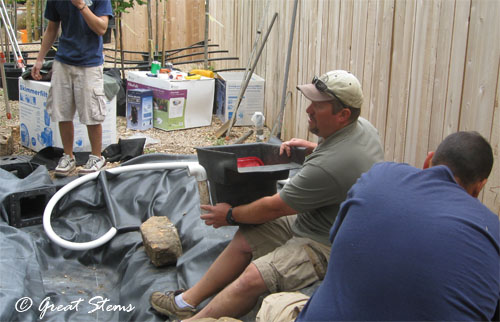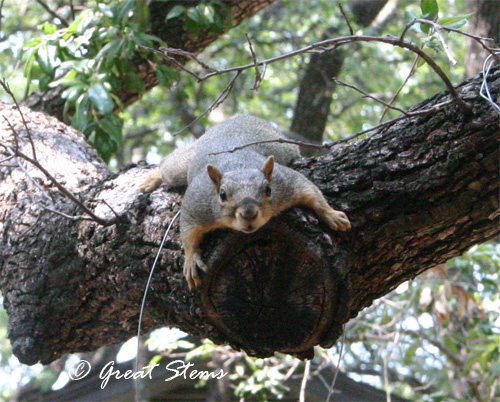Heavy rains this week combined with beautiful weather today made it a perfect time to get out in the garden. I’ve been pulling weeds fairly easily from the moist soil, pruning old plant parts, and playing in the dirt. I’ve also been playing with a new camera, but so far it and I are not seeing eye to eye, as it were. Alas.
Being out in the garden meant I got to see many new buds already emerging, and thoughts of pollinators and early blooming plants were on my mind.
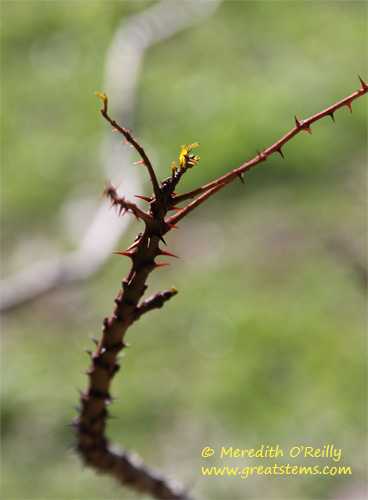 But first I’ve got to show off something I’m super-thrilled about — the Lime Prickly Ash lives! It dropped its leaves for the winter and then the dogs knocked it completely out of the ground (mom was not a happy camper). Fortunately, it was crazy cold that day and I was able to get it back in the ground fairly quickly, hoping desperately that the little guy was fully dormant. Well, thank goodness — the leaves, they be a’coming! We have extra boulders now surrounding the Prickly Ash — hopefully the dogs will heed the barrier.
But first I’ve got to show off something I’m super-thrilled about — the Lime Prickly Ash lives! It dropped its leaves for the winter and then the dogs knocked it completely out of the ground (mom was not a happy camper). Fortunately, it was crazy cold that day and I was able to get it back in the ground fairly quickly, hoping desperately that the little guy was fully dormant. Well, thank goodness — the leaves, they be a’coming! We have extra boulders now surrounding the Prickly Ash — hopefully the dogs will heed the barrier.
Last year was the year of minimal gardening for me. The drought made me extra wary of stressing my young natives by pruning and encouraging root growth when no water was to be had. This year, we’ve fortunately had a bit of rain, and it’s time to take care of overdue matters, like the Texas Lantana:
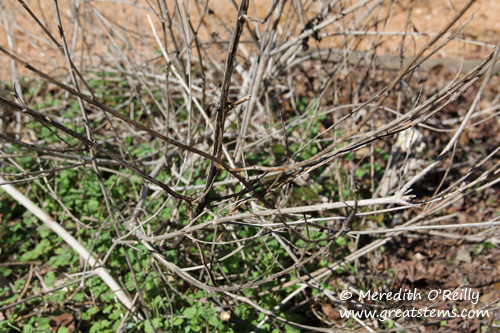 As you can see, it needs it! The Texas Lantana in the butterfly garden had become rather unruly, and little plants were able to grow under the woody branches whether I wanted them to or not. In the case of little Cedar Elm saplings or the unknown type of aggressive bush sage that I’ve been trying to get rid of, it’s not a good thing to have a woody barrier blocking your way to them. You can see lots of henbit below, as well. However, as I pruned back the Lantana and pulled out unwanted other things, I made a happy discovery:
As you can see, it needs it! The Texas Lantana in the butterfly garden had become rather unruly, and little plants were able to grow under the woody branches whether I wanted them to or not. In the case of little Cedar Elm saplings or the unknown type of aggressive bush sage that I’ve been trying to get rid of, it’s not a good thing to have a woody barrier blocking your way to them. You can see lots of henbit below, as well. However, as I pruned back the Lantana and pulled out unwanted other things, I made a happy discovery:
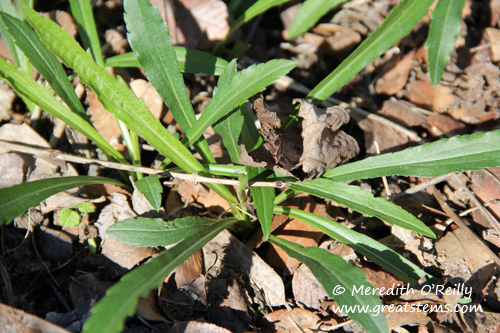
Ten little Goldenrods! These will one day blossom into golden gems that are pollinator paradises. My first Goldenrod was wildlife-planted about two years ago (in the Lantana, of course). Last year one became three. And now I’ve got ten little ones that I will move into more appropriate spots. Here’s what they’ll look like one day (that’s the mama plant):
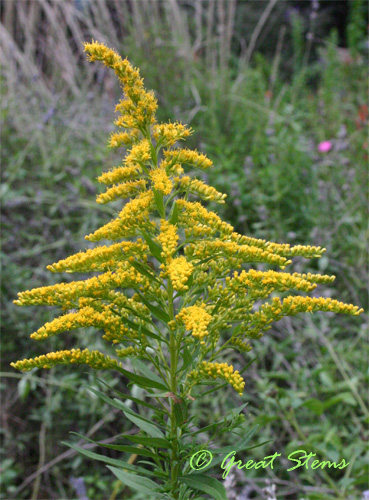
I’ve also got a few veggies planted — broccoli, snow peas, spinach. The herbs out there right now are for the Black Swallowtails. I didn’t see many of these gorgeous butterflies last year due to the drought, so I want to have plenty to feed the caterpillars in hopes that they (and we) will all have a better year. And so I have several different kinds of dill, parsley, and fennel — if I need a little for cooking, I’ll take it, but otherwise these herbs are all for the caterpillars.
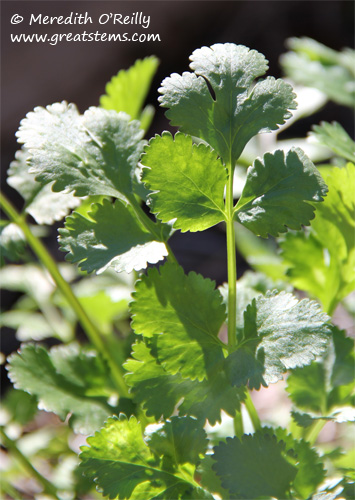
Buds on many trees and little seedlings in the ground are sprouting. We are having a rather warm winter, so I worry that a hard freeze will have an ill effect, but I’ll do what I can to help them.
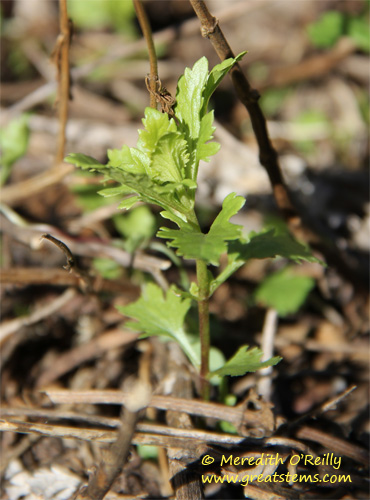 Here’s a sample of the Gregg’s Mistflower seedlings popping up all over their bed. In other beds, I’m getting to play the “Name That Seedling” game. I did see Standing Cypress and Purple Coneflower, a few Poppies, and maybe even a Gayfeather. There are other plants that will just have to grow bigger and maybe even bloom before I’ll be able to ID them. That’s the fun of spreading an assortment of seeds around — you don’t know what’s going to germinate!
Here’s a sample of the Gregg’s Mistflower seedlings popping up all over their bed. In other beds, I’m getting to play the “Name That Seedling” game. I did see Standing Cypress and Purple Coneflower, a few Poppies, and maybe even a Gayfeather. There are other plants that will just have to grow bigger and maybe even bloom before I’ll be able to ID them. That’s the fun of spreading an assortment of seeds around — you don’t know what’s going to germinate!
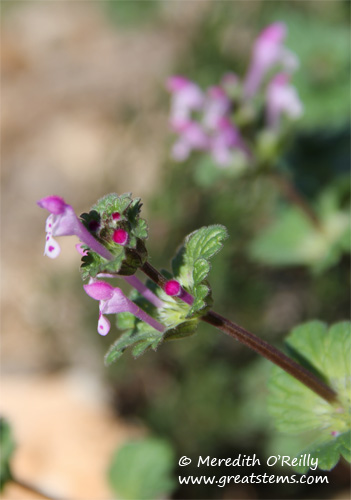 And then there’s the henbit. I have a decent tolerance for this annual, despite it being a non-native that spreads like mad. But it’s a source of nectar for early pollinators when sometimes there’s not much else around, and it is sooooooo easy to pull out from the ground thanks to its shallow roots. So I take out henbit where I want but leave some in the wild areas for the pollinators. Once other plants are blooming, the henbit might be in more trouble.
And then there’s the henbit. I have a decent tolerance for this annual, despite it being a non-native that spreads like mad. But it’s a source of nectar for early pollinators when sometimes there’s not much else around, and it is sooooooo easy to pull out from the ground thanks to its shallow roots. So I take out henbit where I want but leave some in the wild areas for the pollinators. Once other plants are blooming, the henbit might be in more trouble.
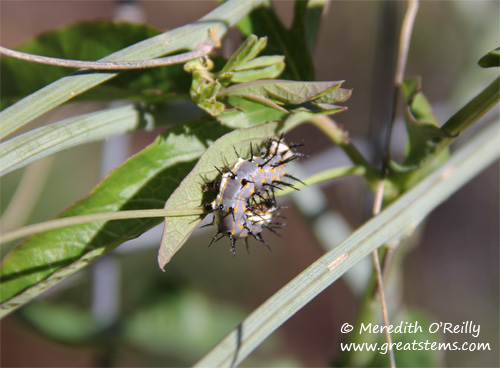 On this pleasant day, the birds have been busy as always, and out in the garden I was joined by little butterflies, little bees, little flies, and one little caterpillar, a Gulf Fritillary. I’m going to have to tackle its Passionvine soon — the vine climbed into the nearby redbud last year and wants to do so again. The little Mexican Redbud is already about to bloom — I want it to be its own tree again, free from anything trying to strangle it!
On this pleasant day, the birds have been busy as always, and out in the garden I was joined by little butterflies, little bees, little flies, and one little caterpillar, a Gulf Fritillary. I’m going to have to tackle its Passionvine soon — the vine climbed into the nearby redbud last year and wants to do so again. The little Mexican Redbud is already about to bloom — I want it to be its own tree again, free from anything trying to strangle it!
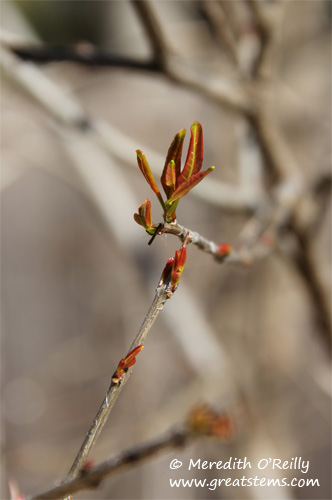 And lastly, I’m happy to see that the Pomegranate has its leaves emerging. We had no fruit last year, but it is still a young tree. Last year, its second year since we planted it, was clearly a growth year for the tree — it grew taller than our roof! We’re crossing our fingers (again) that we’ll get fruit this year — I by gosh want to make Pomegranate Guacamole!
And lastly, I’m happy to see that the Pomegranate has its leaves emerging. We had no fruit last year, but it is still a young tree. Last year, its second year since we planted it, was clearly a growth year for the tree — it grew taller than our roof! We’re crossing our fingers (again) that we’ll get fruit this year — I by gosh want to make Pomegranate Guacamole!
I’m glad to be back outside and I’m ever so grateful for the occasional rain we’ve had. It’s so satisfying to be able to prep the beds and get them ready for new growth, new blooms, and maybe even a few new plants to fill the gaps — we’re eager to welcome more emerging pollinators!
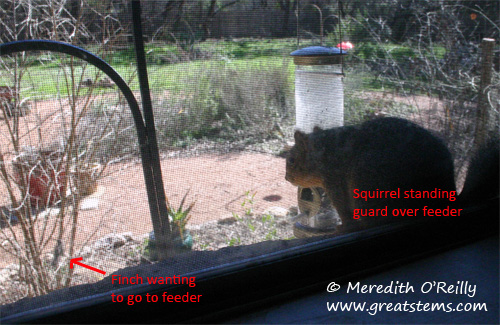
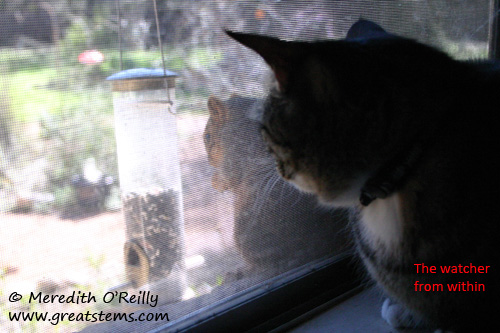
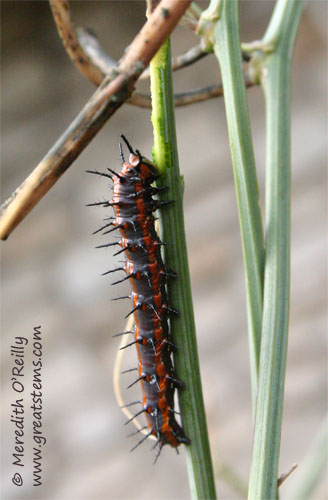
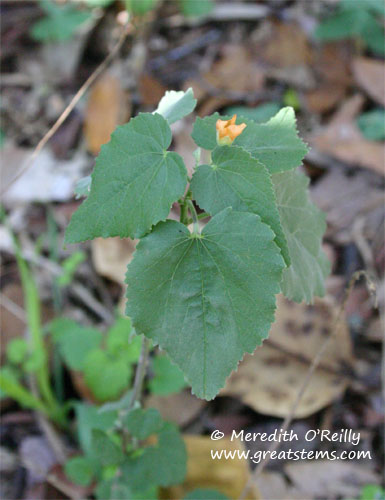
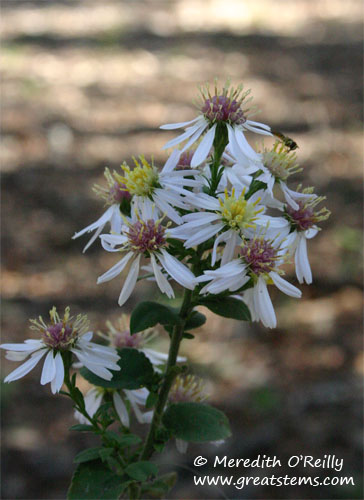
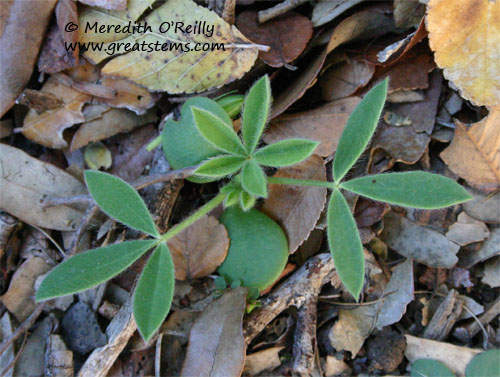
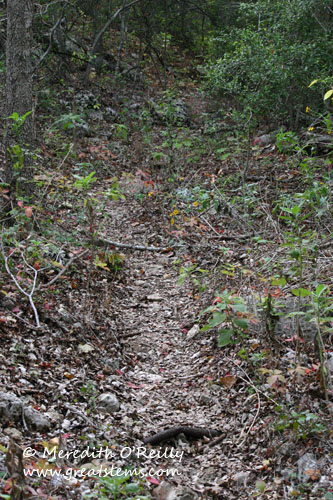
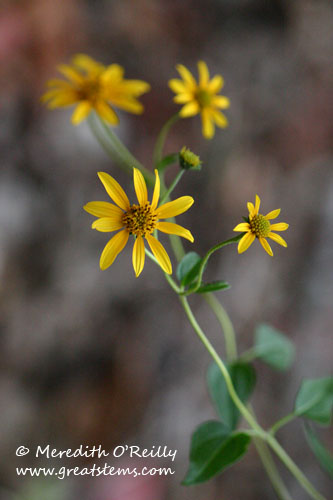
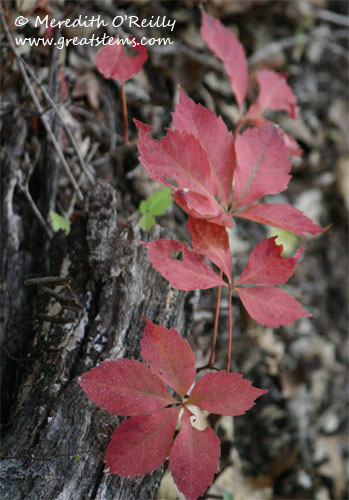
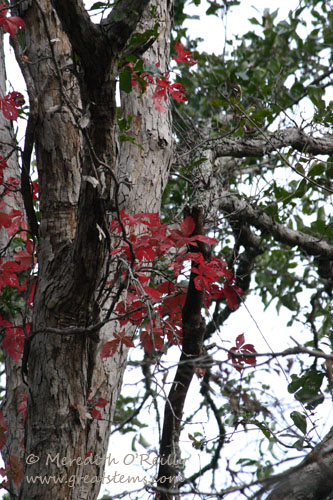
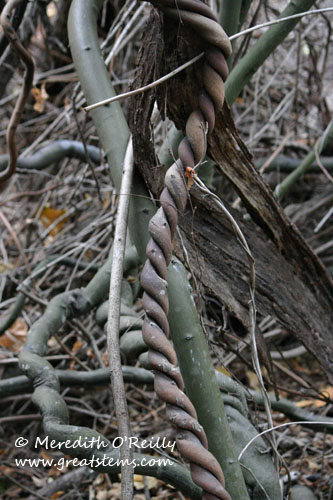
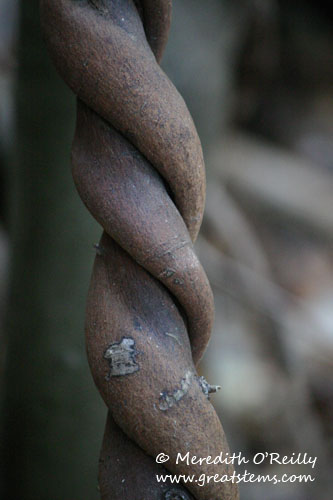
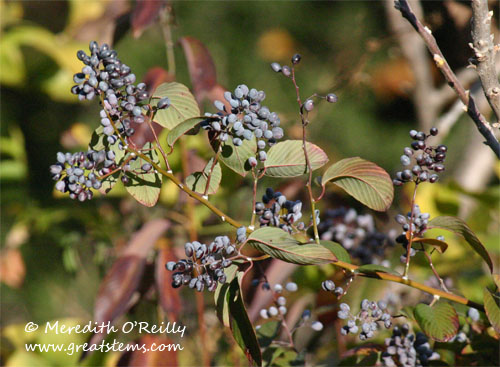
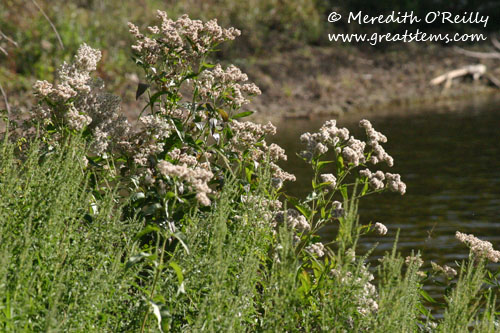
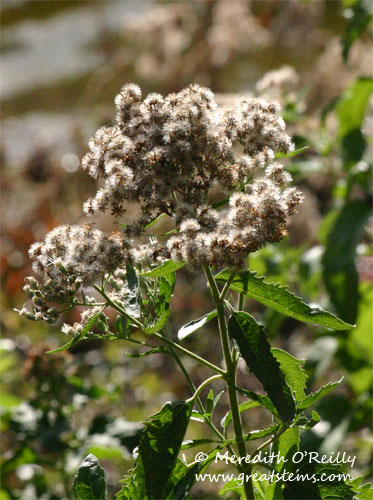
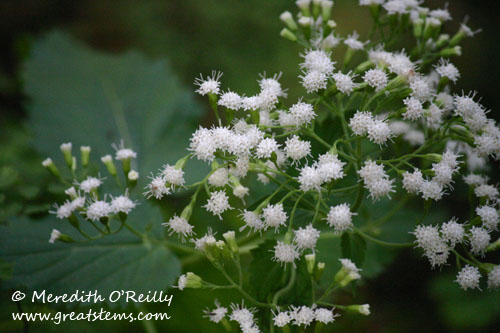
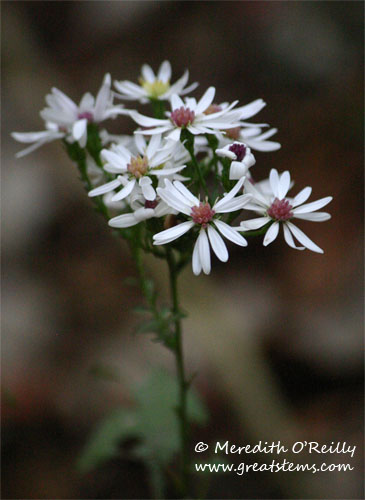
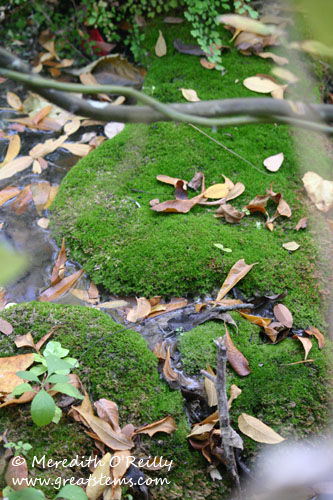
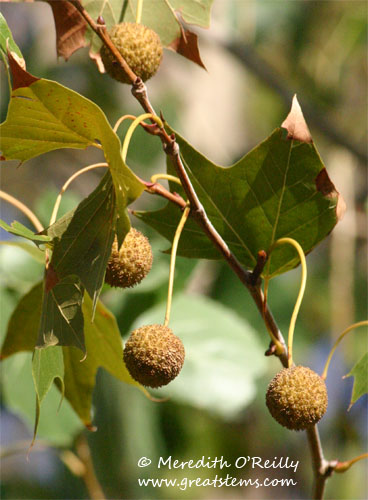
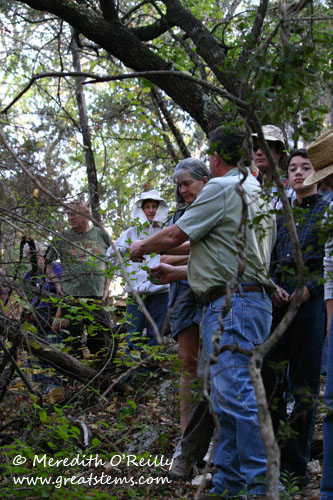
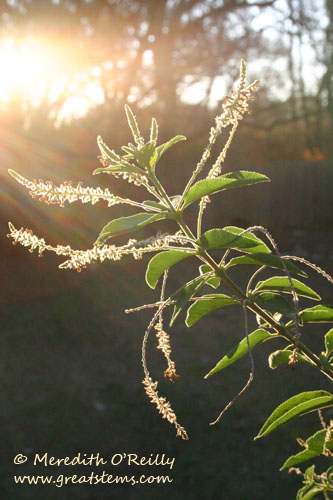
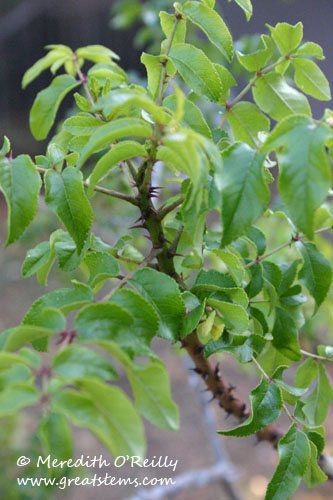
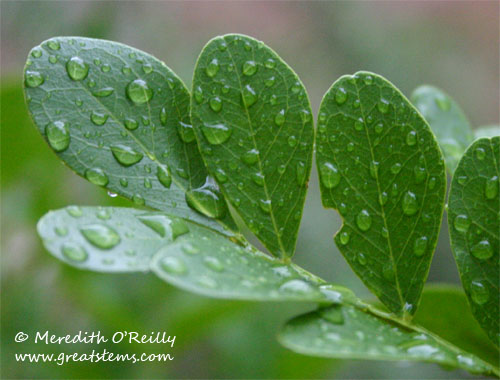
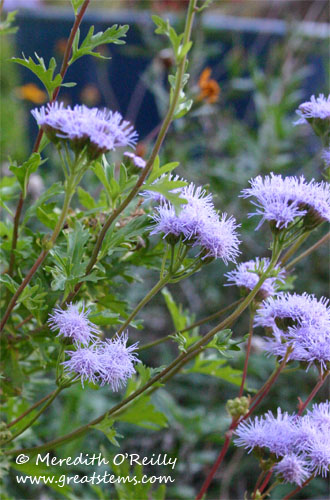 Also, I’m seriously overdue on giving my annual garden update. Pending, pending, pending! But I’m happy to be back at my beloved Great Stems, blogging once again! I know I only disappeared for a couple of weeks, but it felt like an eternity!
Also, I’m seriously overdue on giving my annual garden update. Pending, pending, pending! But I’m happy to be back at my beloved Great Stems, blogging once again! I know I only disappeared for a couple of weeks, but it felt like an eternity!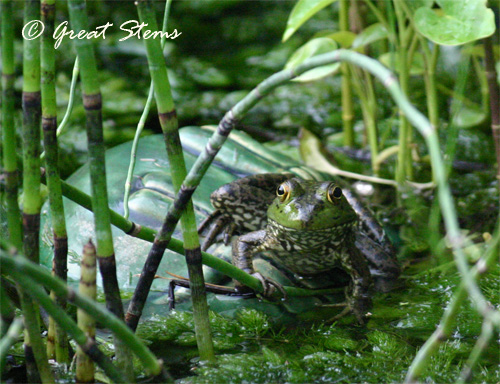
 The extended drought really has created terrible hardships for our local nurseries, so all during October, designated Support Your Independent Nursery Month, several Austin garden bloggers have been highlighting their favorite nurseries each Wednesday to encourage people to get out there and give our local gems a little garden-shopping-kind-of-love. I can tell you that my garden and ponds would not even exist were it not for the wonderful plants, landscape materials, tips, and encouragement I’ve gotten from many of Austin’s finest nurseries. This is such a great time to get back in the garden, too — fall planting is the best for so many plants and delicious veggies. Whether you’re looking for new perennials or trees, pottery, holiday gifts, garden tools, or other items — this is a great time to get them!
The extended drought really has created terrible hardships for our local nurseries, so all during October, designated Support Your Independent Nursery Month, several Austin garden bloggers have been highlighting their favorite nurseries each Wednesday to encourage people to get out there and give our local gems a little garden-shopping-kind-of-love. I can tell you that my garden and ponds would not even exist were it not for the wonderful plants, landscape materials, tips, and encouragement I’ve gotten from many of Austin’s finest nurseries. This is such a great time to get back in the garden, too — fall planting is the best for so many plants and delicious veggies. Whether you’re looking for new perennials or trees, pottery, holiday gifts, garden tools, or other items — this is a great time to get them!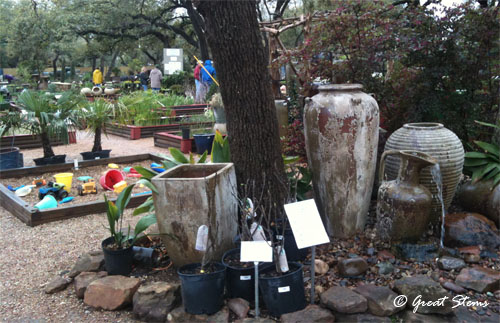 I’m quite pleased to be able to host a giveaway for a $50 gift certificate for
I’m quite pleased to be able to host a giveaway for a $50 gift certificate for 